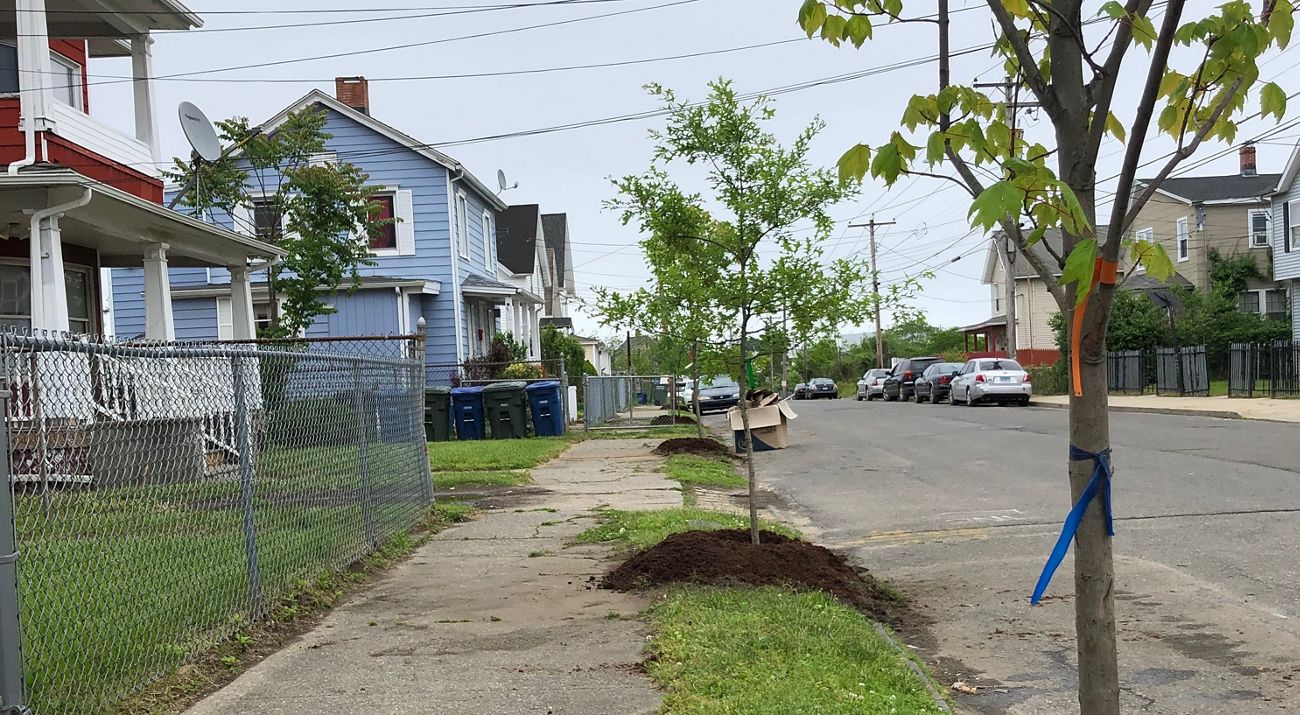New Urban Forest Network for Equity and Resilience Takes Root in Connecticut
A new state initiative aims to identify and implement natural solutions to protecting residents from effects of climate change.

Media Contacts
-
Susan Wollschlager
The Nature Conservancy
Phone: 203-209-6218
Email: s.wollschlager@tnc.org
Communities across Connecticut can learn from their peers to advance urban forestry plans and long-term change for residents through a new initiative supported by The Nature Conservancy made possible through a $2.2 million award from the U.S. Forest Service’s Urban and Community Forestry Program. Over the next five years, the funding will facilitate the development of the Connecticut Urban Forest Network for Equity and Resilience, which aims to build the state’s urban forestry capacity, particularly in communities with very low tree canopy.
This collaborative, statewide work will assess community urban forestry needs and give members a chance to work together while learning from each other. Emerging strategies will lay the foundation for the new network, which will cultivate sustainable funding and capacity.
“There are numerous approaches to caring for and expanding Connecticut’s urban forests, and many communities seek opportunities to learn from their peers. Time is of the essence, and bringing together communities across the entire state will maximize impact,” explains Drew Goldsman, The Nature Conservancy’s urban conservation director in Connecticut.
He adds, “A network is nothing unless people know that they are connected in a real way. They need to see themselves in it, and have ownership over it. That’s going to be one of the goals in creating this network.”
The work will also increase the number of stakeholders who view themselves as urban forest advocates and practitioners. The proposal follows years of urban forestry work in Bridgeport, with TNC linking community-based groups in education programs, tree plantings and plans for a future that leverages nature-based solutions to address climate challenges.
“The program coalesced around urban forestry and the benefits of trees, as well as stormwater management, all in the context of addressing inequities in the distribution of those natural resources. So we’ve done tree plantings, community mapping and implementation of stormwater projects in Bridgeport,” Goldsman explains.
Tree concerns in various communities run the gamut. Roots might buckle sidewalks and create tripping hazards. Different planting processes might result in trees that fail to thrive. Criteria for assessing and removing trees vary greatly. Civic capacity may not exist for tree monitoring and care. The perceived value of trees spans a wide range, and funding may not be available for tree work.
Always a beloved backdrop for childhood playtime, trees are also appreciated by many for their ability to provide shade and cool the air during hot weather. And they have a palpable impact on mental health and well-being, as well as on filtering air and water, including stormwater runoff in urban environments.
“Trees have a distinct cooling effect on air temperature called evapotranspiration. That’s important to consider regarding the urban heat island effect in cities, where heat is amplified by being absorbed by concrete and re-radiating at the end of the day,” Goldsman says.
All of the many services provided by trees influence the approach developed by the new Connecticut Urban Forest Network for Equity and Resilience, with the goals of protecting residents and addressing issues caused by climate change. Partners include the Connecticut Urban Forest Council, the Division of Forestry of the State of Connecticut Department of Energy and Environmental Protection, The Department of Natural Resources and the Environment at the University of Connecticut, and municipalities and community organizations from across the state.
The Nature Conservancy is a global conservation organization dedicated to conserving the lands and waters on which all life depends. Guided by science, we create innovative, on-the-ground solutions to our world’s toughest challenges so that nature and people can thrive together. We are tackling climate change, conserving lands, waters and oceans at an unprecedented scale, providing food and water sustainably and helping make cities more resilient. The Nature Conservancy is working to make a lasting difference around the world in 83 countries and territories (39 by direct conservation impact and 44 through partners) through a collaborative approach that engages local communities, governments, the private sector, and other partners. To learn more, visit nature.org or follow @nature_press on X.